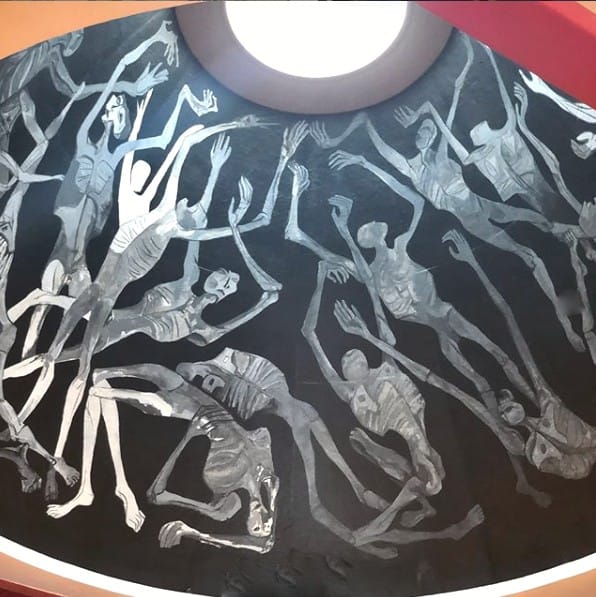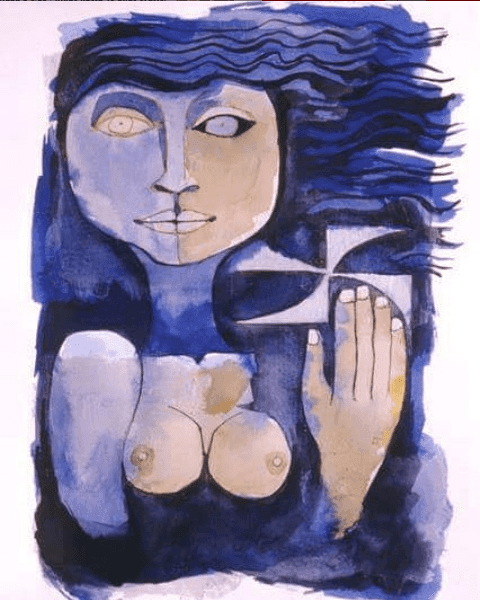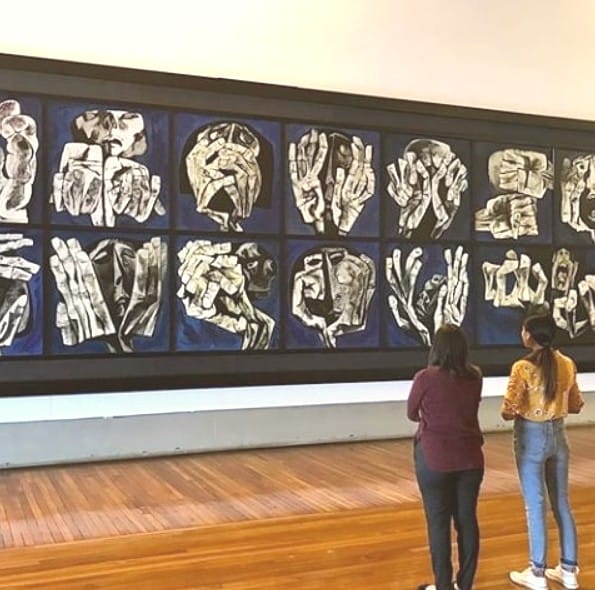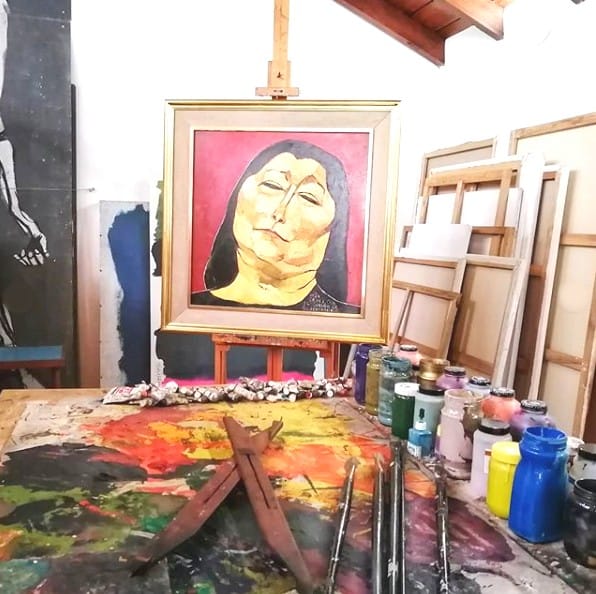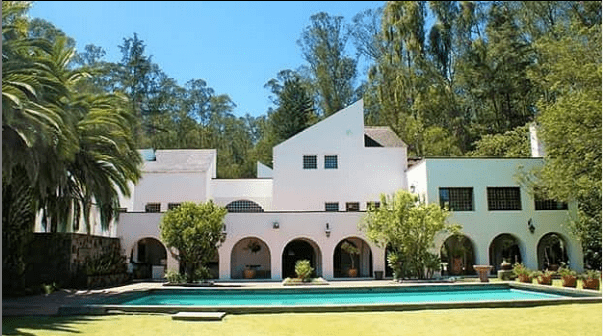

Estimated reading time: 5 minutes – Written by our friend Lupita Ruiz-Tolento
Quito’s Guayasamín museum is a captivating way to learn about the region’s social and political history. The famed artist’s dramatic representation of Latin America’s oppressed peoples successfully awakens its visitors. And beyond the art, the man himself carries a story worth looking into. These are the tidbits that aren’t as highlighted, but just as fun and thought-provoking, as his iconic paintings.
Inside Oswaldo Guayasamín’s home atop a hillside in the north of Quito, a very special work of art was added to his personal collection in 2016. It is a portrait-size painting of a family of pandas in what is presumably a bamboo forest. It was a gift from China’s first lady to his children, who manage the Fundación, as a token of appreciation for their father’s legacy. This work of art came up as our tour of his home was wrapping up, and is not at all representative of or allusive to his art. We reflected on this for a moment as we stepped outside to his courtyard, towards the giant tree where his ashes were spread in 1999. And then it clicked.
The painting of the pandas struck us as a bit out of place, yet reflected the reach and respect Guayasamín’s work has garnered worldwide. His own art eclipses his curious and eclectic persona. If we hadn’t asked the right questions and leaned into the biographical narrative as shared by our guide, o
ur fascination would have remained within the confines of his paintings. So if you plan to visit this museum (and any traveler who craves a dose of local history should), Takiri encourages you to look beyond the paintings to consider the man behind Ecuador’s most emblematic art.
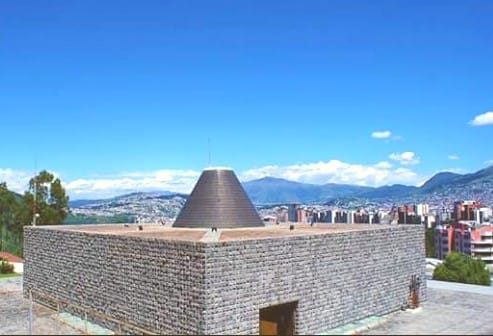
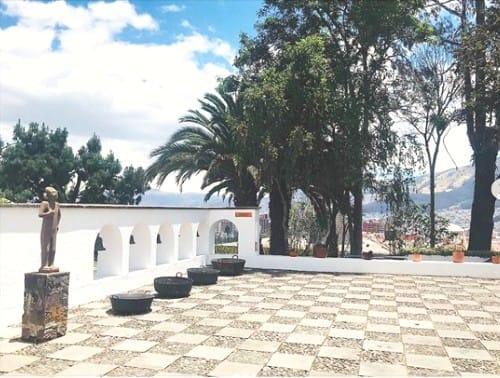

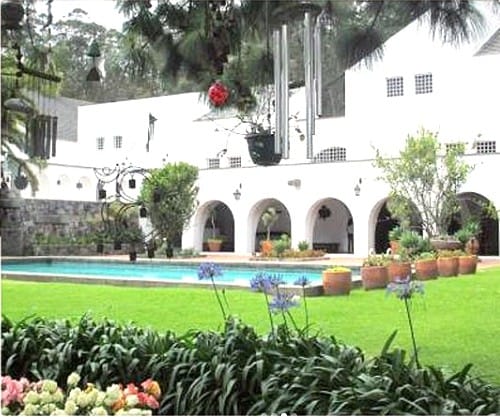

On this visit, we aimed to collect a few fun details about the artist and museum that aren’t normally highlighted to visitors. We left energized from this regionally famed artist’s living legacy, and curious about the life and companionship that inspired it. These details demystify the persona of the artist — they make Guayasamín relatable and elevate his relevance. They take him from being Ecuador’s most important artist, to a human being full of contradictions and existential crises, just like the rest of us. Here are our most interesting takeaways:
1. He was an atheist, religious art fanatic: When you visit his home, you almost wonder whether he was trying to emulate The Last Supper. Around the long table in the center, the walls and halls are adorned with figures, sculptures, and paintings that look like they came straight out of Quito’s many churches and monasteries. He was a strict atheist, but his appreciation for religious art was perhaps his biggest obsession as a collector. This detail is even more interesting when you consider the religious influence behind some of his paintings – is he mocking it, appreciating it, or simply adopting its motifs?
2. He had a pretty eventful love life: And the only reason we’re bringing it up is because he is sort of asking for it — his home’s gallery includes many art pieces dedicated to his first wife, Maruja Monteverde. She is the only one of his three wives that is represented artistically. Another one of his wives wrote an incriminating book about him titled, Una Luz Sin Sombras, or “A Light Without Shadows”, in which she exposes a rather dark side to the otherwise warmly depicted artist. He had seven children total with two of his wives, and together they run the show behind this private museum and foundation.
3. His social circle was pretty extraordinary: Guayasamin’s friendships ranged from other regionally renowned artists to global political figures. The long table you’ll see at his home hosted the likes of Fidel Castro, Pablo Neruda, and Gabriel Garcia Marquez. His art is inseparably linked to the political turmoil that he witnessed during his lifetime. These friendships reflect his participation in an important cohort of literary, artistic, and political figures that resisted the dominant forces of the late 20th century. Learning about his intimate connection to these Latin American icons gave us another angle from which to appreciate his perspective.
4. He backpacked through Latin America before Che Guevara. Before Che Guevara jumped on his motorcycle for what came to be every backpacker’s social justice-driven trip through the Americas, Guayasamín did just that, in 1945. His trip didn’t receive as much attention, but it did create the experiences that would be manifest in his art. It gave him first-hand accounts of class struggle in the region that he called “El Camino del Llanto”, or roughly, “The Path of Sorrow”. We just thought it was neat that he had a traveller’s heart!
5. He was a lover of personal space and created his own burial site. He personally designed his house so that he would be the only person residing in it, with guest rooms in the periphery. And that giant tree in his main yard? He planted that himself, which was also very intentional: he wanted his ashes spread there. It seems all that creative energy really required some alone time. What we know for sure is Guayasamín was a lone wolf at heart, and he sure thrived in solitude.
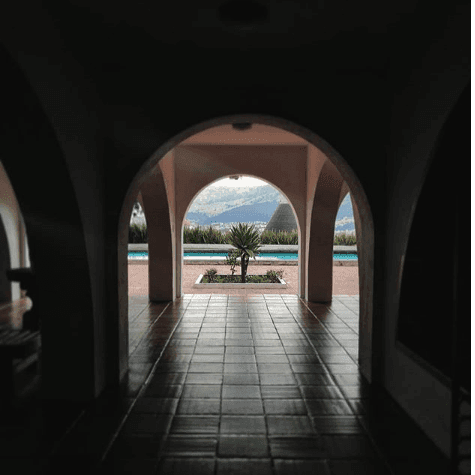

Fun facts aside, this museum is perhaps one of the world’s closest approximations to an authentic Casa-Museo. Collectively, it represents the artist’s studio, home, and vision. Guayasamin’s presence is palpable – you can imagine him having wandered the halls and painted in his studio the day before. And when you step outside into his yard, where his spirit lives, you’ll have a new filter through which to appreciate Quito and the surrounding Andes, his artistic muse.
Below are a few things to consider when planning your visit:
- It is OPEN every day from 10 a.m. to 5 p.m. (except regional and national holidays)
- Cost is $8 for adults; $4 for students (with ID), seniors, and visitors with disabilities; children under 12 visit for free
- We suggest taking the following: a camera, cash (for tips, and café)
- Length of visit: Approximately 2 hours
- How to get there:
- Taxis are almost required to know where this museum is, so they should know where to take you upon mention. For reference, a taxi from Old Town to the museum will run you $4-5.
- Ecovía: Get off at Bellavista, then walk a block north to Jose Bosmediano Street. Take a right on Bosmediano, and then take a right on Mariano Calvache street (it’ll be uphill and about a 20-minute walk). Mariano Calvache street will take you straight to the museum, which will be on your right.

